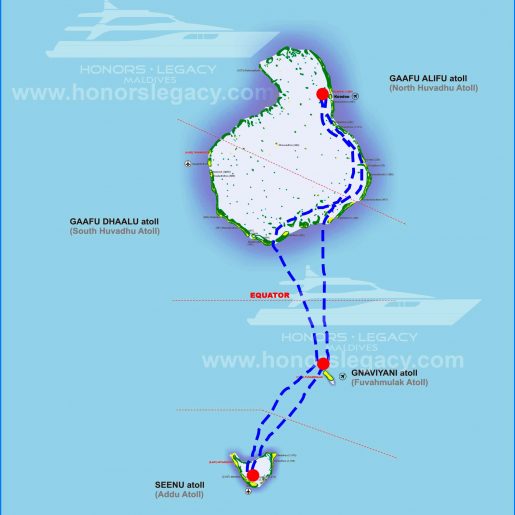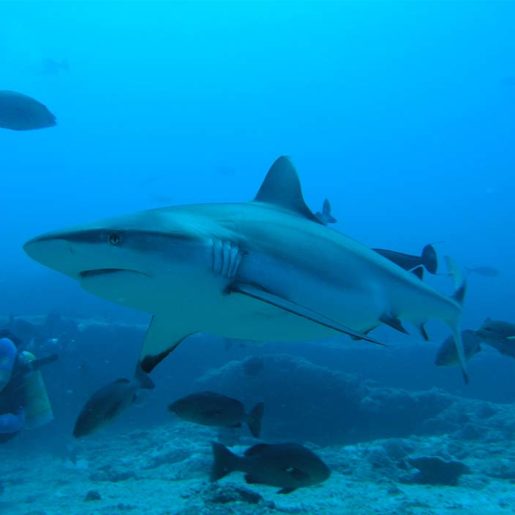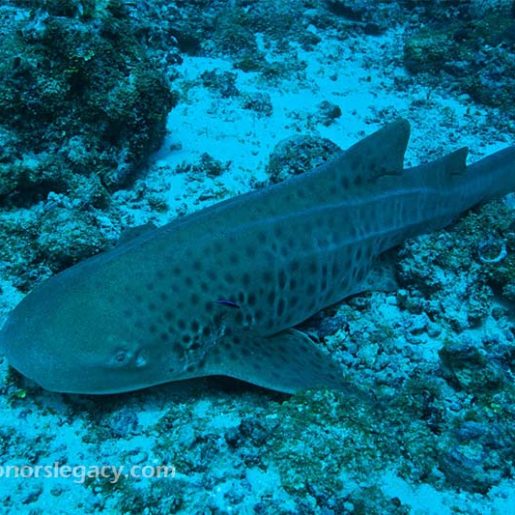Huvadhoo Atoll (Gaafu Alif / Gaafu Dhaal)
- Huvadhoo Atoll, also known as Gaafu Atoll, is one of the southern and the deepest atoll in the Maldives. Here are numerous pristine dive sites filled with caves, steep drop offs and beautiful underwater landscapes, as well as breath-taking coral formations and fish life.
- Diving at Nilandhoo Kandu sees divers likely to face the strongest current near the entrance of the channel and the drop-off.
- Expect to see mantas, leopard sharks, grey reef sharks, silky sharks, schools of barracudas, eagle rays, schools of jacks, and turtles on the sandy bottom. Nilandhoo Kandu is popular with ‘shark trips’ and underwater photographers.
- Mareehaa Kandu is a channel dive perfect for underwater photographers wanting some macro shots. At this site divers drift the reef, wall, and look out for big fish. At the entrance of the channel it is possible to see grey reef sharks, eagle rays and trevallies. There are also schools of silversides and bluefin trevallies, as well as various shrimp and crabs near the hard corals. Hawksbill turtles and whale sharks are spotted occasionally.
- Huvadhoo Atoll: Whale Sharks, more sharks, fast channel dives in Vilingilli Kandu area
Fuvahmulah
This solitary island, also commonly called Foammulah Atoll, lies within the Equatorial Channel between Huvadhoo Atoll to the north and Addu Atoll to the south. It consists of a low lying coral formation that spans 4.5 km in length and stretches 1.2 km wide. What sets this unique atoll apart from other Maldives dive sites are the frequent sightings of thresher sharks, oceanic white tips and tiger sharks.
ADDU ATOLL
British Royalty Wreck
This 420 ft long tanker is the biggest wreck in the Maldives, torpedoed twice during WW II and eventually sunk by the British in 1946. The vessel rests on its starboard side at around 33 meters depth.
Maa Corner
The place is known for its cleaning station hosting manta rays all year long. The main station is quite deep and the current in the channel can make it more difficult to handle for beginners. There are a few coral blocks a bit shallower, which are also considered cleaning stations and mantas can be seen there quite often. Current hooks are recommended to keep the right position and stay in one place for better observation.




